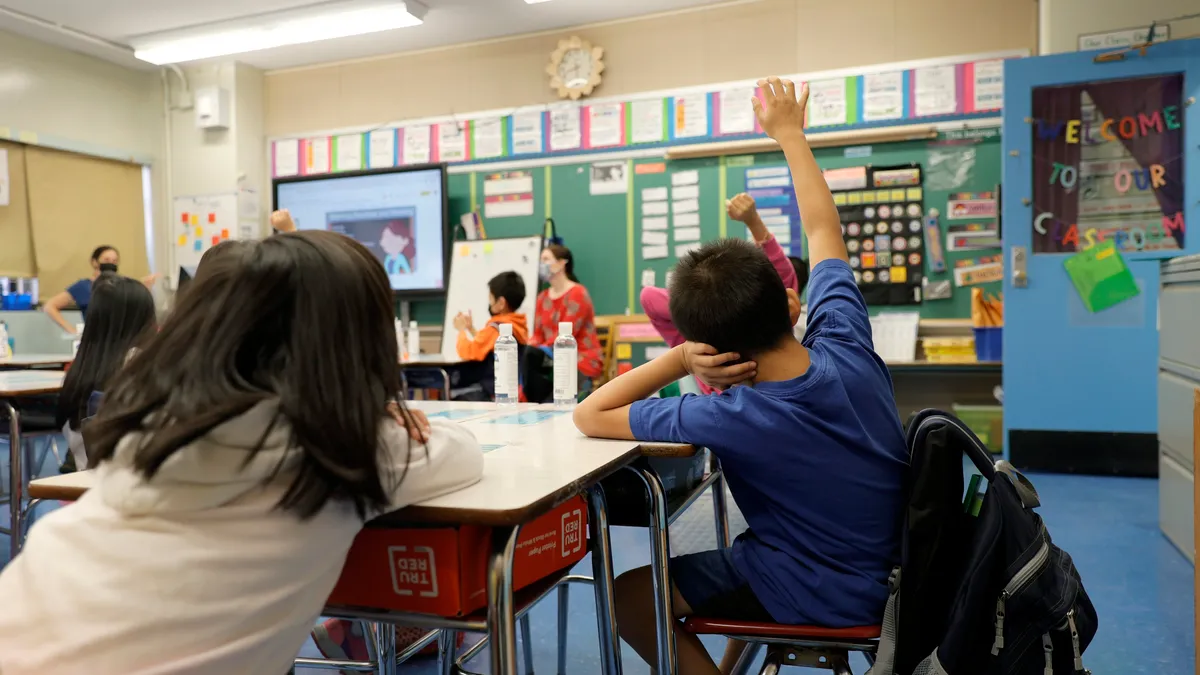As English learners faced a significant variety of challenges during the pandemic, districts struggled with virtual screening and identification, according to anecdotal evidence collected from 20 education leaders by New America. The findings were published in a report released Wednesday.
Virtual alternatives to screening and identification had "a lot of room for error due to limited and imperfect information" during the pandemic. As a result, education leaders are now erring on the side of caution. That is leading to an inflated number of students currently identified as ELs entering the 2021-22 school year.
This adds to findings from another recent report released by NWEA that used MAP Growth assessment data and suggested English learners are among the students most impacted by summer slide. MAP Growth assessments are commonly used to measure students' academic achievement and growth overtime.
This, the researchers suggested, could be used to infer the impacts of COVID-19 closures on the student population, as well.
The findings demonstrate the disproportionate impact learning interruptions have on the long-term achievement of some marginalized student groups, including ELs, said Lindsay Dworkin, vice president of policy and advocacy at NWEA, in a statement. That makes high-quality summer learning and other interventions "critical," she added.
Funds spent on products, services 'retrofitted'
Despite education leaders' efforts to get English learners back on track, a majority of the leaders have not been meaningfully included in discussions about how to spend relief money meant for these students, the New America report says. And although federal leaders have identified ELs as a priority, information on how to use the money "is still scarce."
"Instead, products and services were most often retrofitted to include ELs, which is not a way to equitably meet their needs," authors concluded.
Leslie Villegas, senior policy analyst for New America, said in an email, "We were surprised about the fact that most, if not all, of the people we interviewed felt that decisions about how ARP/ESSER funding should be allocated were made in a black box."
Rather than investments in products, most education leaders the organization spoke to wanted funds invested in people to help address ELs’ most pressing academic and social-emotional needs.
"We worry that the limited accountability and oversight for this funding will make it difficult to ascertain and understand how this unprecedented funding is benefiting ELs," Villegas said.
Challenges with learning data
What's more, state and local assessment for English learners "has been lacking," which has made understanding the pandemic's impact on their opportunity to learn a challenge, the report explained.
Most recent data released by WIDA at the Wisconsin Center for Education Research, which created English language proficiency assessments, shows student proficiency and growth in 2021 trending downward when compared to years just prior to the pandemic. The largest declines were in elementary and middle school grades — a trend consistent with learning lags in students outside of the English language learner pool.
For ELs, the largest decline was in speaking. Still, test scores varied by grade and domain, the WIDA report showed. And there were also differences in student sample for the 2020-21 school year, considering students were tested at different times, and the testing pool declined by 30% when compared to the number of students tested prior.
WIDA concluded that "it is imperative" for districts to factor in the characteristics of the student sample when making conclusions about proficiency and growth across years.
What can districts do?
Across the board, researchers and reports agree the educational experiences of English learners during the pandemic varied widely — and that challenges such as strains on the teacher workforce persist despite schools reopening.
"First, it quickly became clear that a lot of the struggle in providing adequate instruction for ELs in remote settings came from the fact that many mainstream teachers, until now, haven't considered themselves language teachers," said Villegas. "COVID completely flipped that notion upside down, and for the better."
Schools and districts that had broken down that divide and had already invested in designing effective programming for ELs were able to adapt much faster and provide stronger instructional support during the pandemic, she added.
Now the report warns it remains difficult to understand opportunity gaps for ELs, and that barriers the student group "faced before and during the pandemic will persist unless there is a fundamental shift" in how policymakers and other local leaders view the students. The shift should be away from deficit-oriented approaches and toward practices "that acknowledge the assets they bring to the classroom."
District leaders should also consider the extent to which their existing supports are meeting the needs of EL students and how those systems were challenged during the pandemic, Villegas added. That could include an evaluation of their EL instruction, such as how content and language are integrated on a daily basis, and how to create opportunities for mainstream and EL teachers to collaborate more.
"District leaders must also meaningfully engage multilingual parents and families to help identify practices that teachers and schools should engage in to better support their children's learning in the classroom," Villegas said. This can include the needs of families, offering timely and accurate translations of district communications, and determining the best means of communication.






















